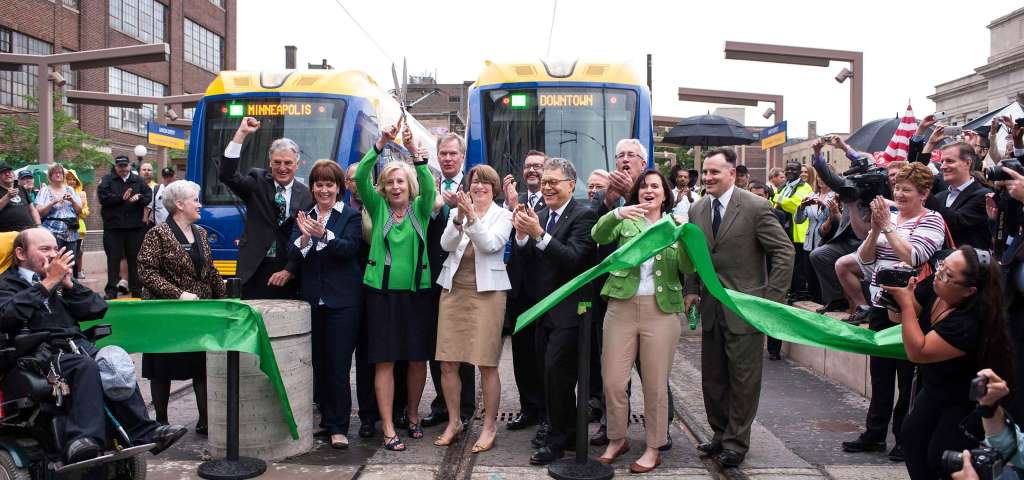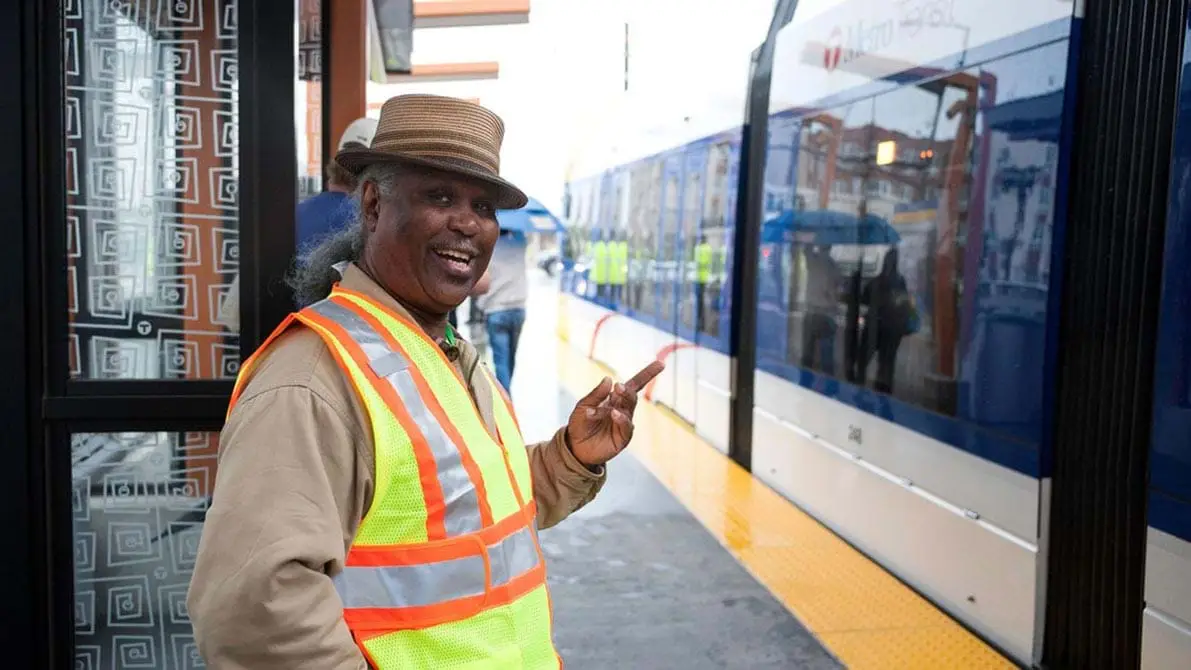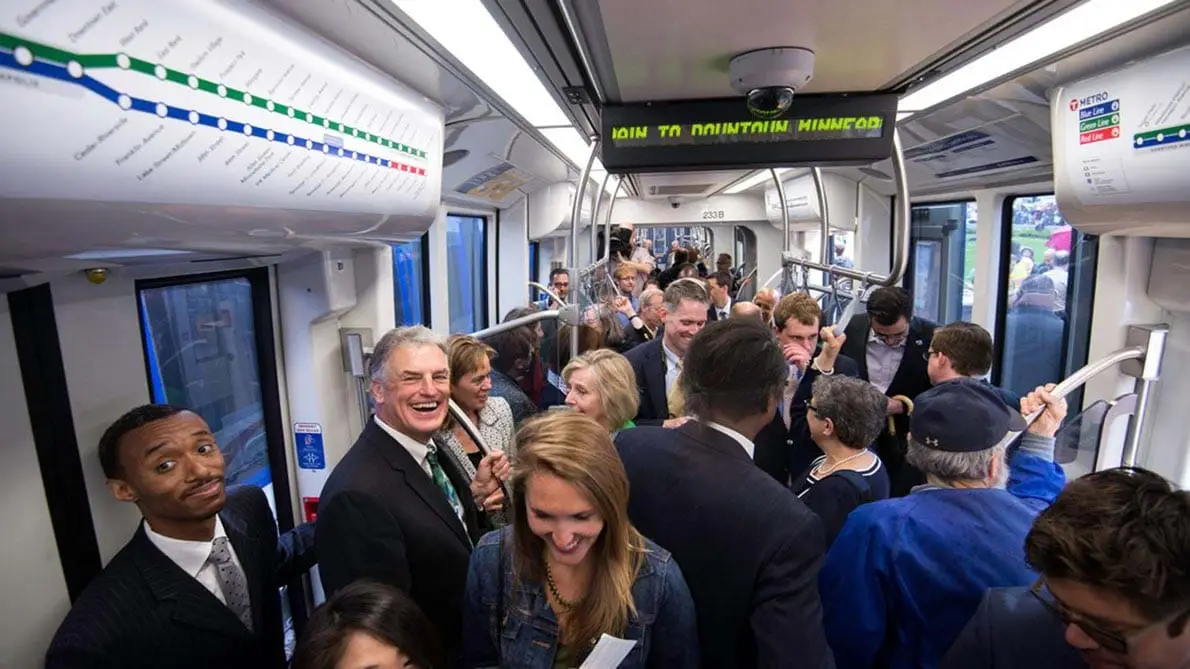
In February, President Obama stood in a refurbished train station in St. Paul, Minnesota, surveyed the standing-room-only crowd, and declared, “This project symbolizes what’s possible.” He was talking about the Central Corridor Light Rail Line (“the Green Line”), a $957 million project to connect downtown St. Paul and Minneapolis via a light rail. And so the opening of the Green Line this weekend was an occasion for celebrating—and an opportunity to take stock of the many benefits that came along with its construction, well before residents boarded a train to take their first ride. A rainy day didn’t dampen enthusiasm: over 45,000 people rode the Green Line in the first eight hours of service.
From the beginning, the local community recognized that the Green Line had benefits far beyond transportation. Funded by federal, state and local sources, the light rail project has been a catalyst for significant economic development, pointing to how strategic public investments in transit and transit-oriented development can create jobs, stimulate local economies and foster more equitable and resilient communities.
It’s an important milestone for the Twin Cities: construction of the Green Line represents the largest public works project in the history of Minnesota, and connects the downtowns of Saint Paul and Minneapolis by rail for the first time since the 1950’s. It will be the first rail project started under the new funding rules announced in 2009 under President Obama that made social equity and economic development priorities on par with cost-effectiveness—setting a high standard for future transportation investments around the country.

Ford was among the national and local funders who came together to create the Central Corridor Funders Collaborative, aimed at encouraging collaboration and investment “beyond the rail.” It’s been a success by any measure: Since work on the Green Line began more than five years ago, developers have announced over $2.5 billion in new construction and redevelopment projects within a half-mile of the new train line.
The project has created over 5,200 construction, operations and maintenance jobs, and is estimated to generate roughly $252 million in payroll by its completion. By 2030, employment along the line is projected to grow by more than 90,000 jobs—increasing the number of jobs in the area by nearly a third. Most notably, the project exceeded its targets for hiring diversity: Minority workers accounted for nearly 19 percent of total construction hours, women almost 7 percent. Fully 20 percent of contracting services were performed by “disadvantaged business enterprises.”
For the foundation and our team in Metropolitan Opportunity, its an exciting demonstration of what can happen when the community is meaningfully engaged in a planning process, and a model of how to make sure public investment projects benefit everyone.

Press Highlights
- The National Journal: Is the Twin Cities’ New Light-Rail Line an Urban Planner’s Dream?
- Fast CoExist: Linking Minneapolis And St. Paul With A Transit Project That Doesn’t Destroy Communities
- The Line: Beyond the Rails: Mapping the Development, Cultural and Community Impact of the New Green Line
- TwinCities.com: The Green Line? That’s Just for Starters
